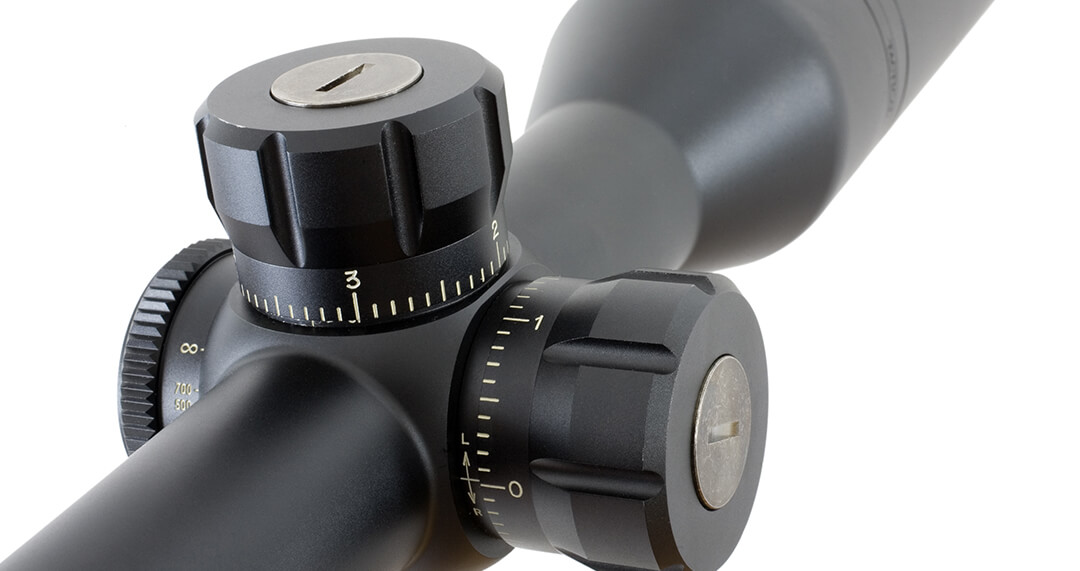Glossary

Firearms that fire a round, eject the spent casing, and automatically chamber the next round after you pull the trigger are called automatic loaders. Sometimes, you’ll find it referred to as an autoloader or semiautomatic.
Not to be confused with a fully automatic or machine gun (see below).
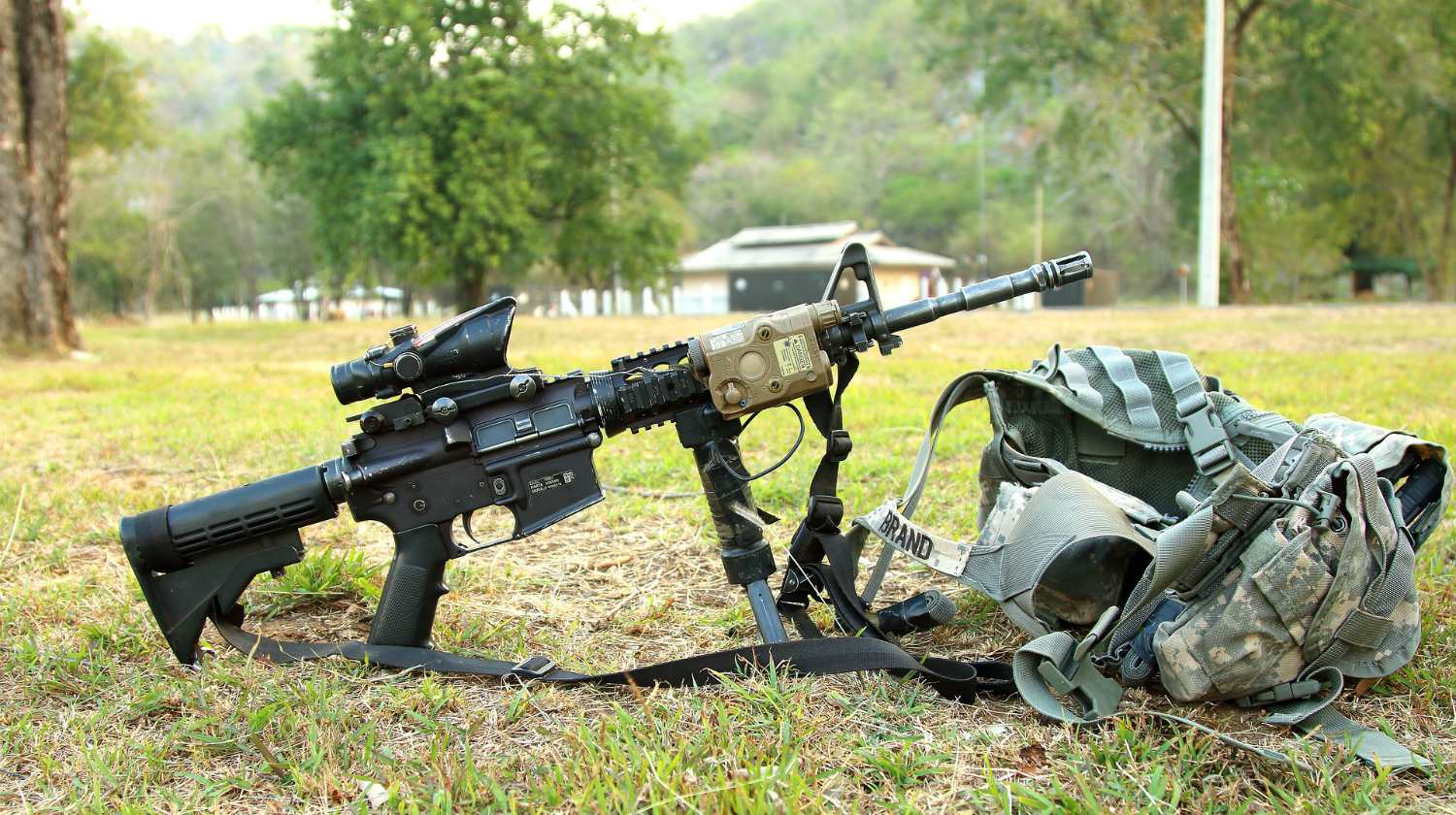
The barrel is the elongated, tube-like structure making up the length of your firearm. It’s through the barrel that projectiles are fired. Barrels can be either rifled or smooth bore (see below).
Some barrels might include a barrel shroud, a perforated plastic or metal guard enclosing the barrel to prevent the user from getting burned when the barrel heats up with use.
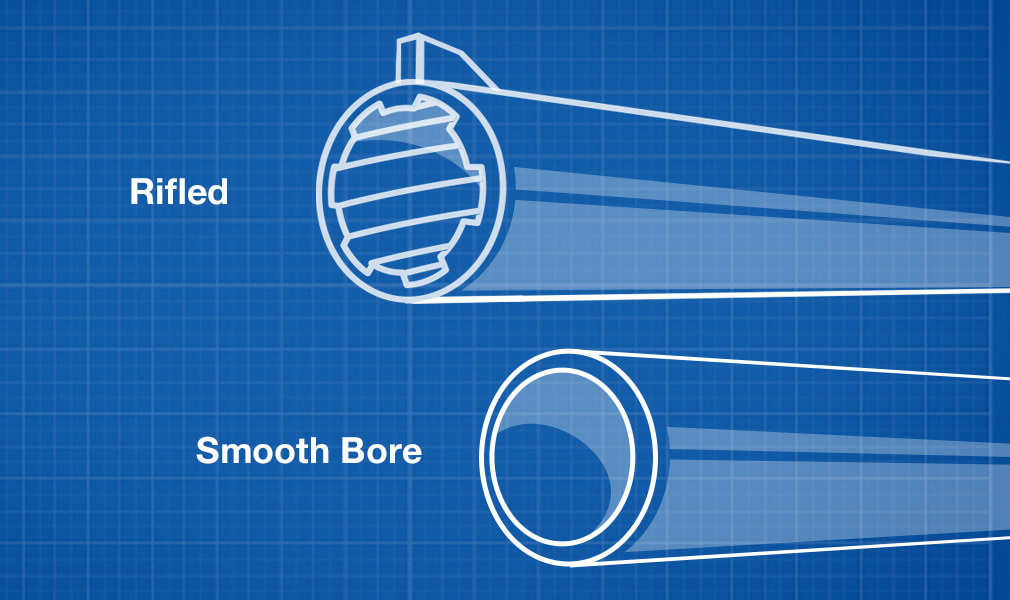
A cartridge is the self-contained combination of a primer (the small amount of explosive that ignites the gun powder), gun powder (the burning, rather than explosive, substance which propels the projectile), and projectile (commonly referred to simply as “bullet”).
Cartridges are designated by their caliber, which refers to the barrel’s internal bore diameter and is typically measured in either inches or millimeters.
Caliber and gauge should not be confused, with the latter used to describe a shotgun’s internal bore diameter specifically.
The clip is a device used for filling (charging) a firearm’s magazine. Many people confuse the two terms and might be referring to the magazine when using the term clip. Most firearms use a magazine, which is the ammunition-feeding device a clip charges.
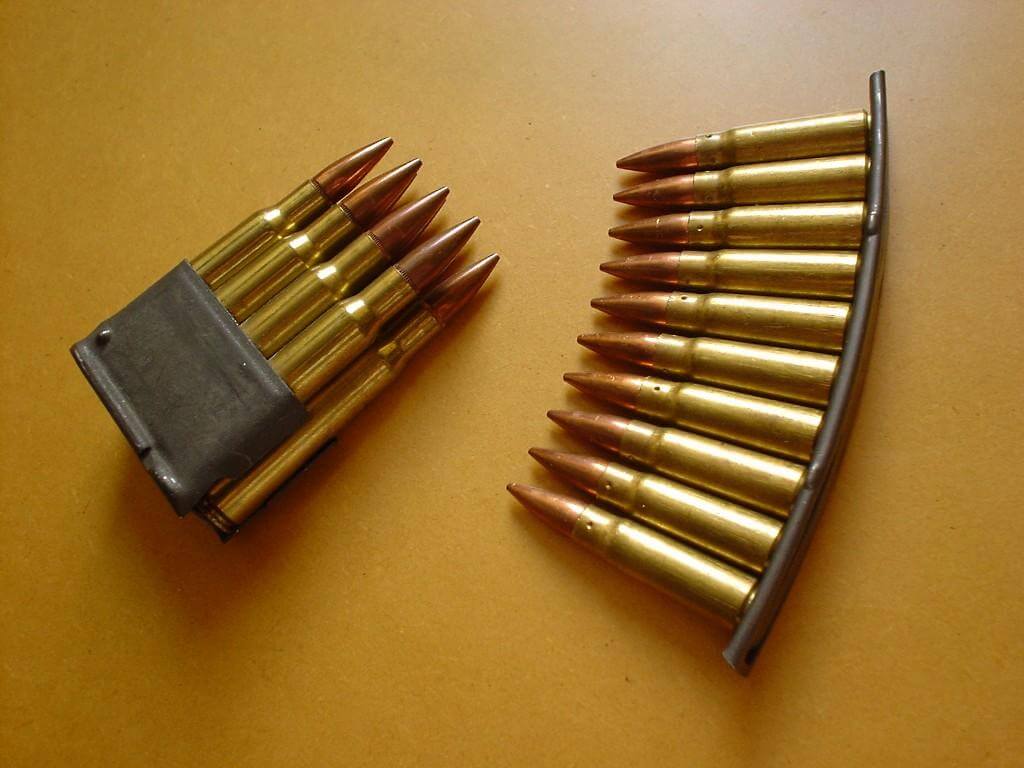
Elevation refers to the vertical alignment of a gun’s sights to ensure the user’s use of the sights allows them to properly aim the firearm. Without correct elevation, the aim might be either too high or too low in relation to the intended target point. Commonly used together with the windage (see below).
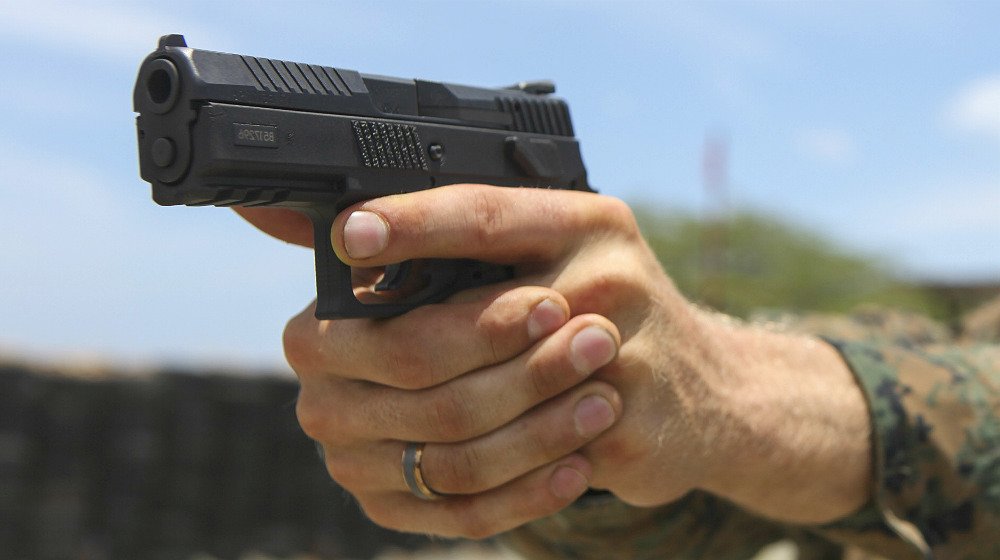
Made a commonly known term by the Stanley Kubrick movie of the same name, full metal jacket refers to a bullet that is enclosed in a jacket of metal, typically copper, in its entirety.
This jacket projects the bullet’s core, which is typically made of softer lead, and allows for deeper penetration. Certain automatic loading and fully automatic firearms can be fed more reliably with full metal jacket bullets due to their aerodynamic shape.
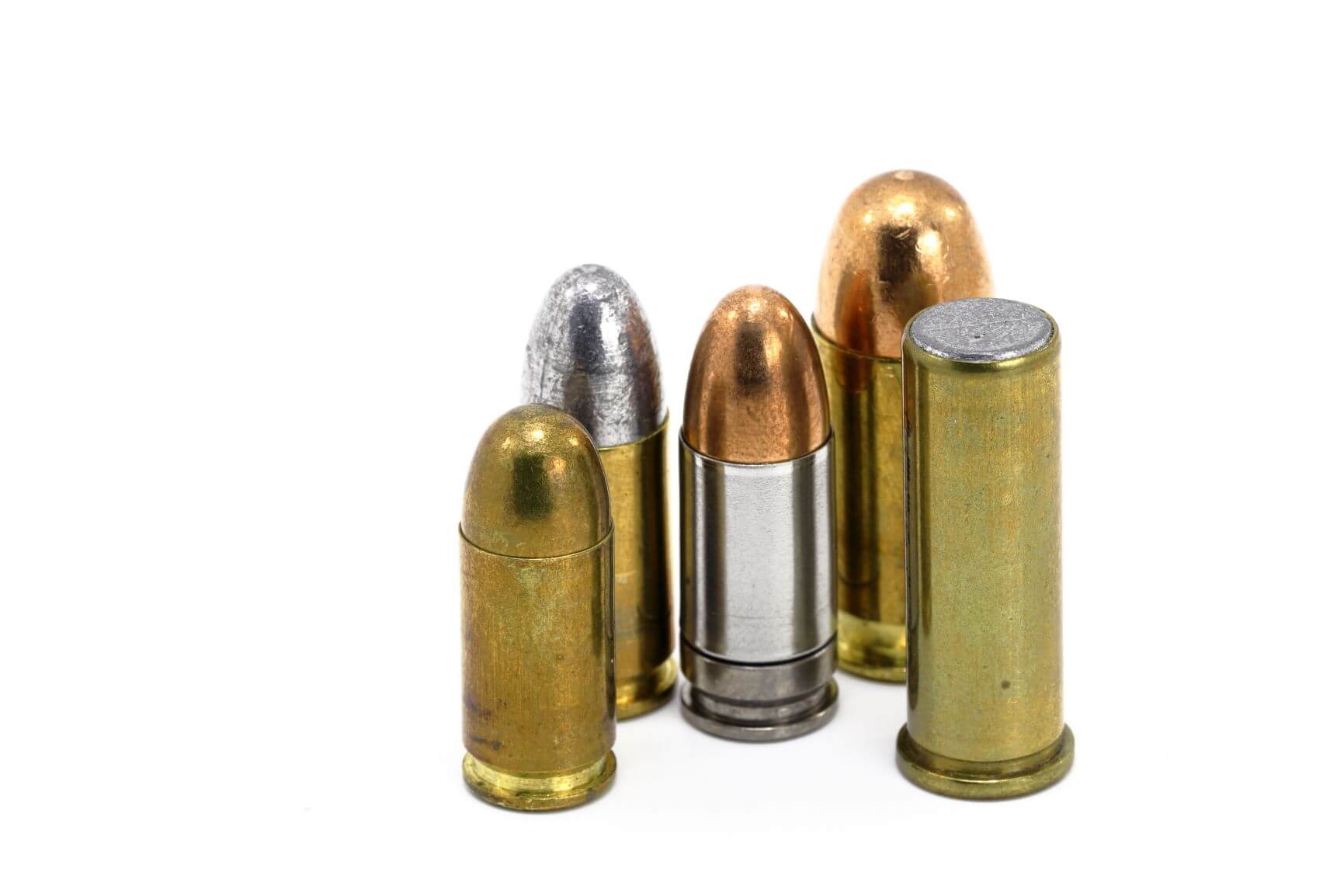
Fully automatic firearms, often referred to as machine guns, fire a round, eject the spent casing, automatically chamber the next round, and repeat the process for as long as the trigger is compressed (held down) and the weapon is loaded.
Not to be confused with an automatic loader or semiautomatic (see above).
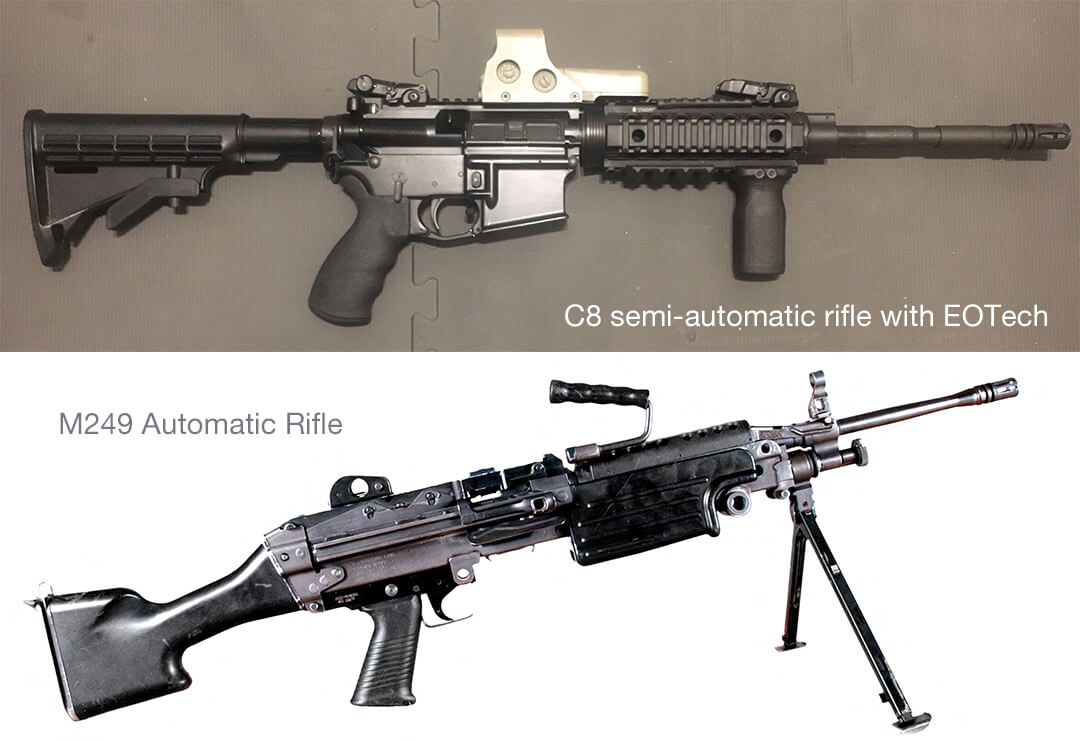
A handgun is a smaller firearm that can be held with one hand, though the user should cup the weapon with their second hand for greater control. A pistol is a semiautomatic handgun that typically stores ammunition in a magazine, while a revolver is a handgun that stores cartridges in a rotating cylinder.
The two should not be confused.
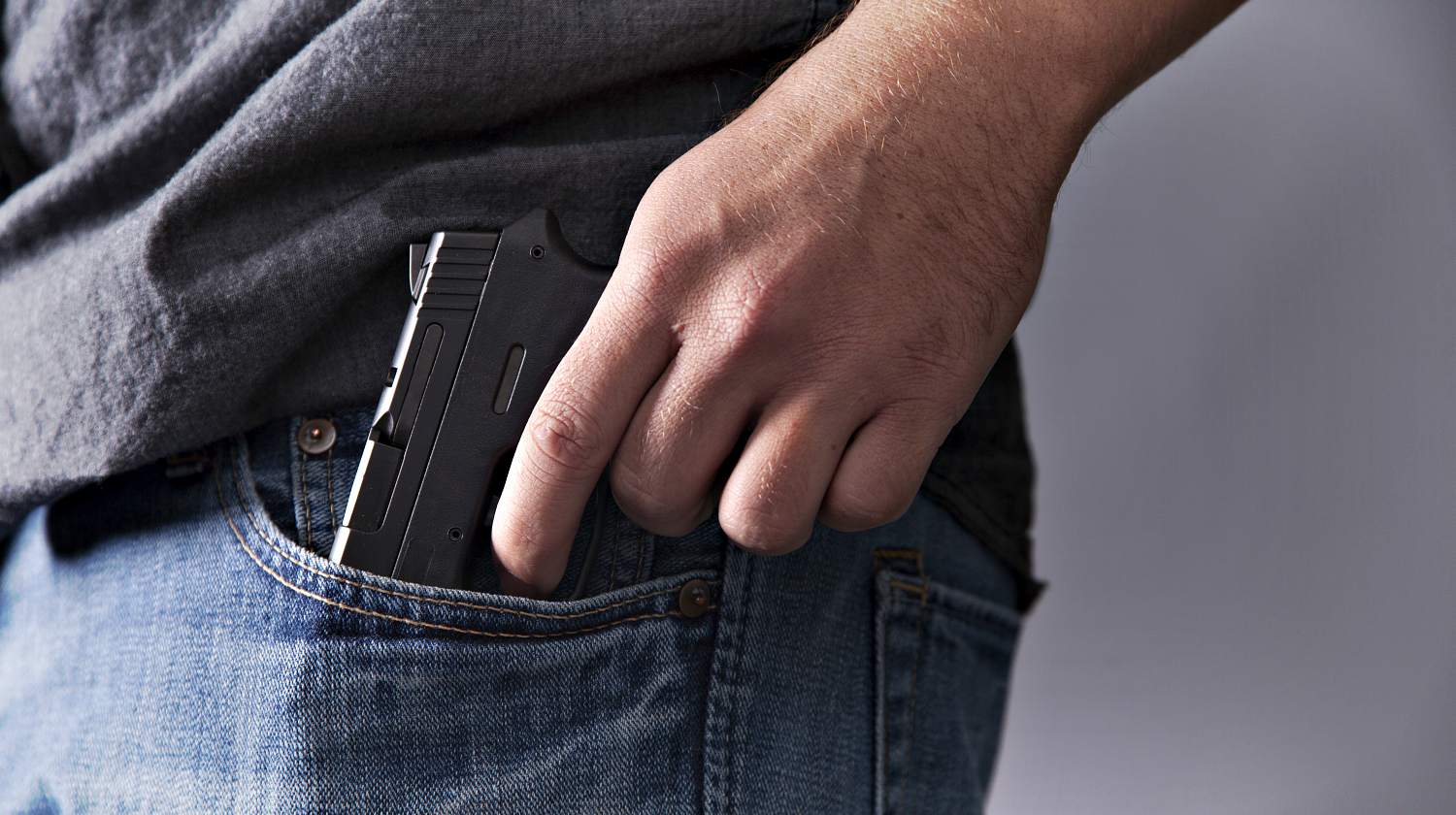
Jacketed hollow point bullets are a hybrid between the full metal jacket and the hollow point. The only true difference between a jacketed hollow point and traditional hollow point is the former includes a partial jacket (typically made of copper) encasing the base and sides of the bullet.
Both forms allow the bullet to flatten out when striking its target, expanding to reduce velocity. This makes it less likely to over-penetrate, which happens when a bullet passes through the intended target and strikes additional objects behind it, which might include innocent bystanders in an active shooting.
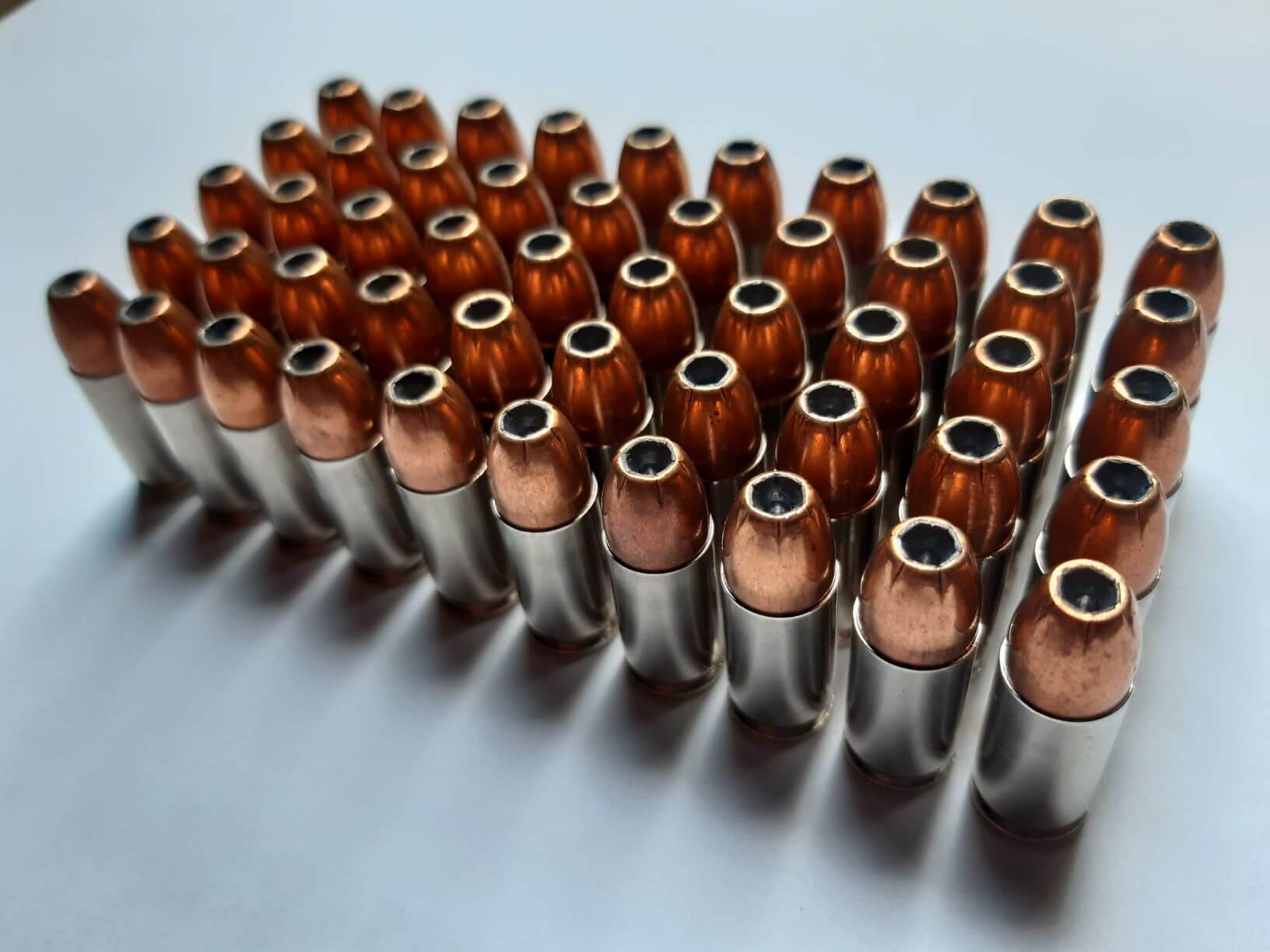
The front end of the barrel, where projectiles exit the firearm, is referred to as the muzzle. A muzzle compensator might be attached to the muzzle to reduce a firearm’s tendency to rise upwards after being fired.
While a muzzle compensator might help reduce recoil somewhat, this is not its primary function. A muzzle brake might be attached instead in order to reduce recoil, though it also increases the level of noise experienced by the user.
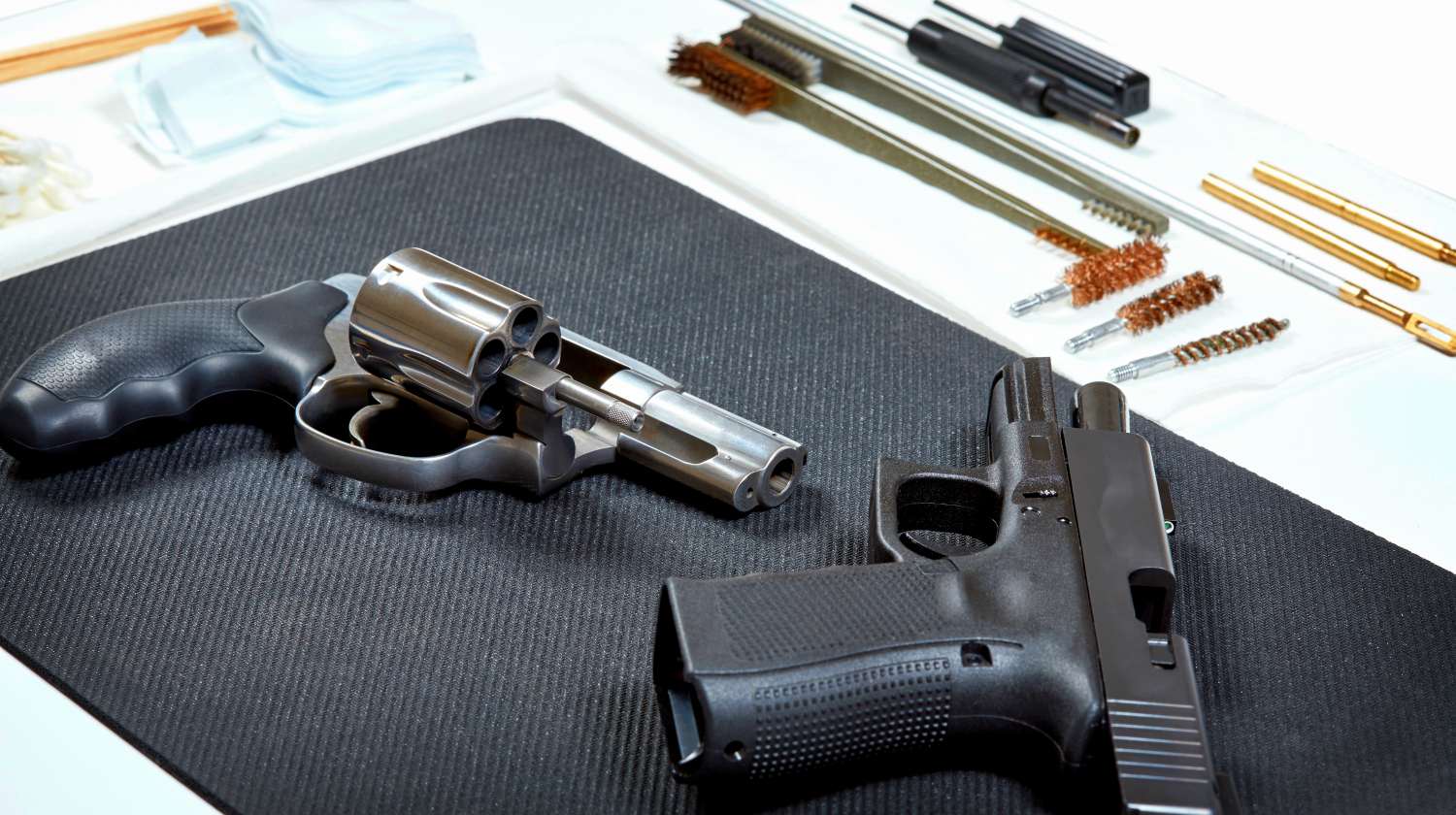
When a firearm is out of battery, its action is not completely closed.
Firing a gun that is out of battery might lead to the weapon’s destruction and injury to the user, which is why many modern firearms have safety features designed specifically to prevent successful discharge (firing) while the weapon is out of battery.
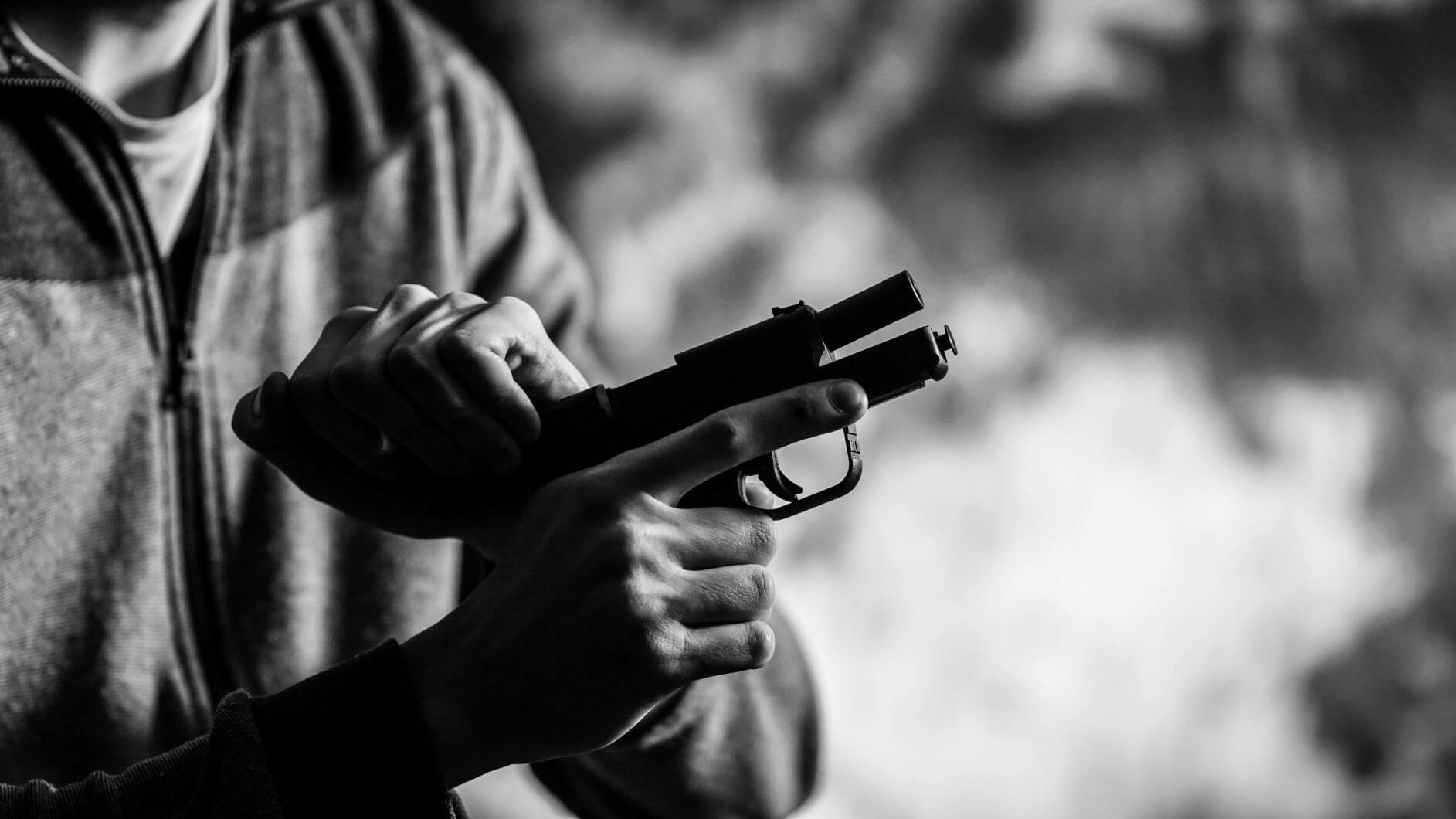
A pistol grip offers an additional surface area for the user to securely grip their long-barrel firearm, typically a shotgun or rifle. It gets its name from sharing a similar appearance to the grip of a pistol (see handgun above).

Recoil refers to the tendency of a firearm to move backward, toward the user, after being fired. This typically ranges from mild enough to be barely noticeable, to severe enough to cause injury to the user if the firearm is not properly held.
Recoil primarily depends on the firearm’s size and weight, as well as the weight and firing speed of the projectile. A muzzle brake can often be attached to reduce recoil and some muzzle compensators might do the same, though with less effect than a muzzle brake (see muzzle above).
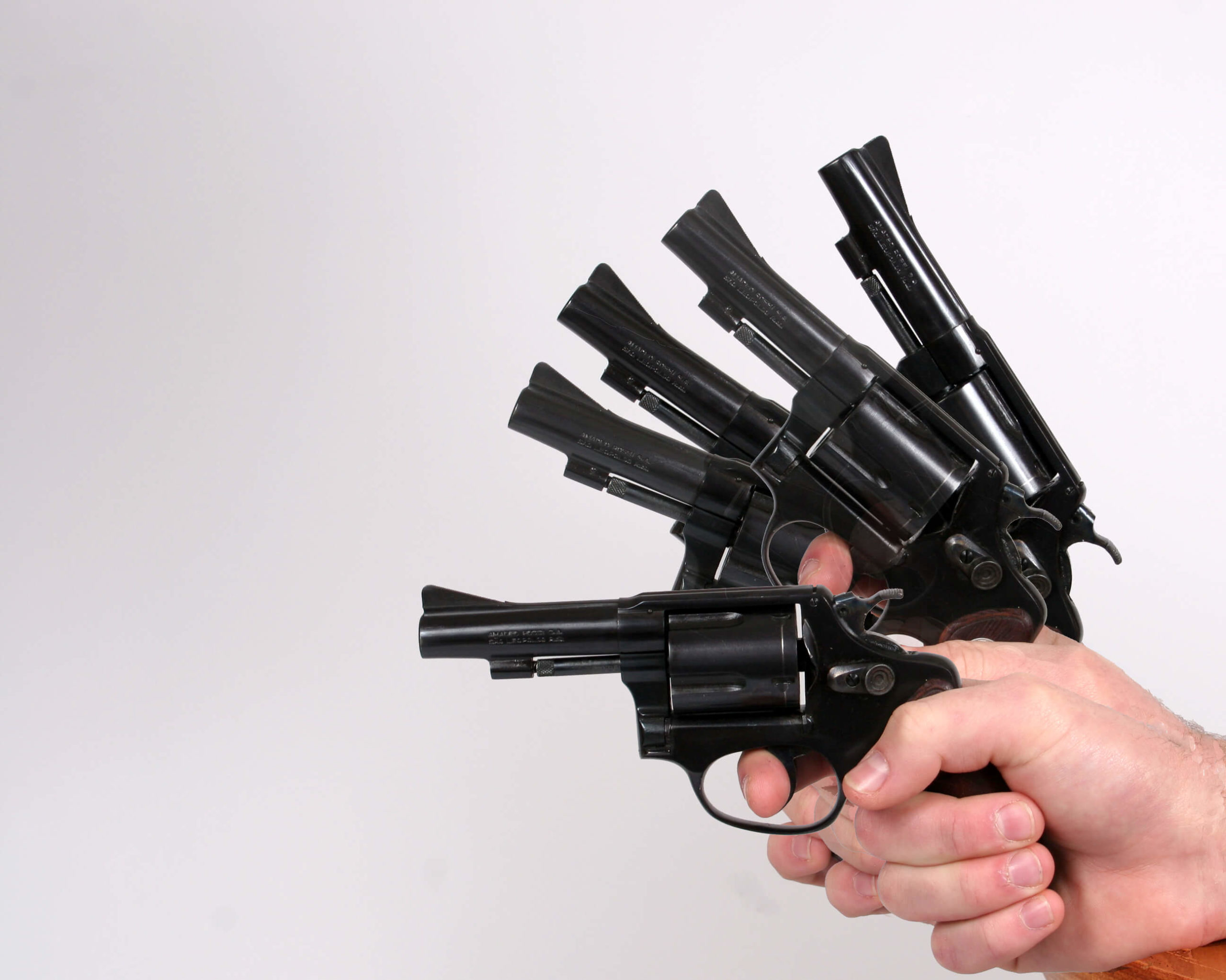
A rifle is a long-barrel firearm designed to be fired from the shoulder for accuracy over a longer range. Rifles generally use cartridges containing longer projectiles than handguns do, typically aiding in the greater range and propelling the discharged projectile at much higher speeds.
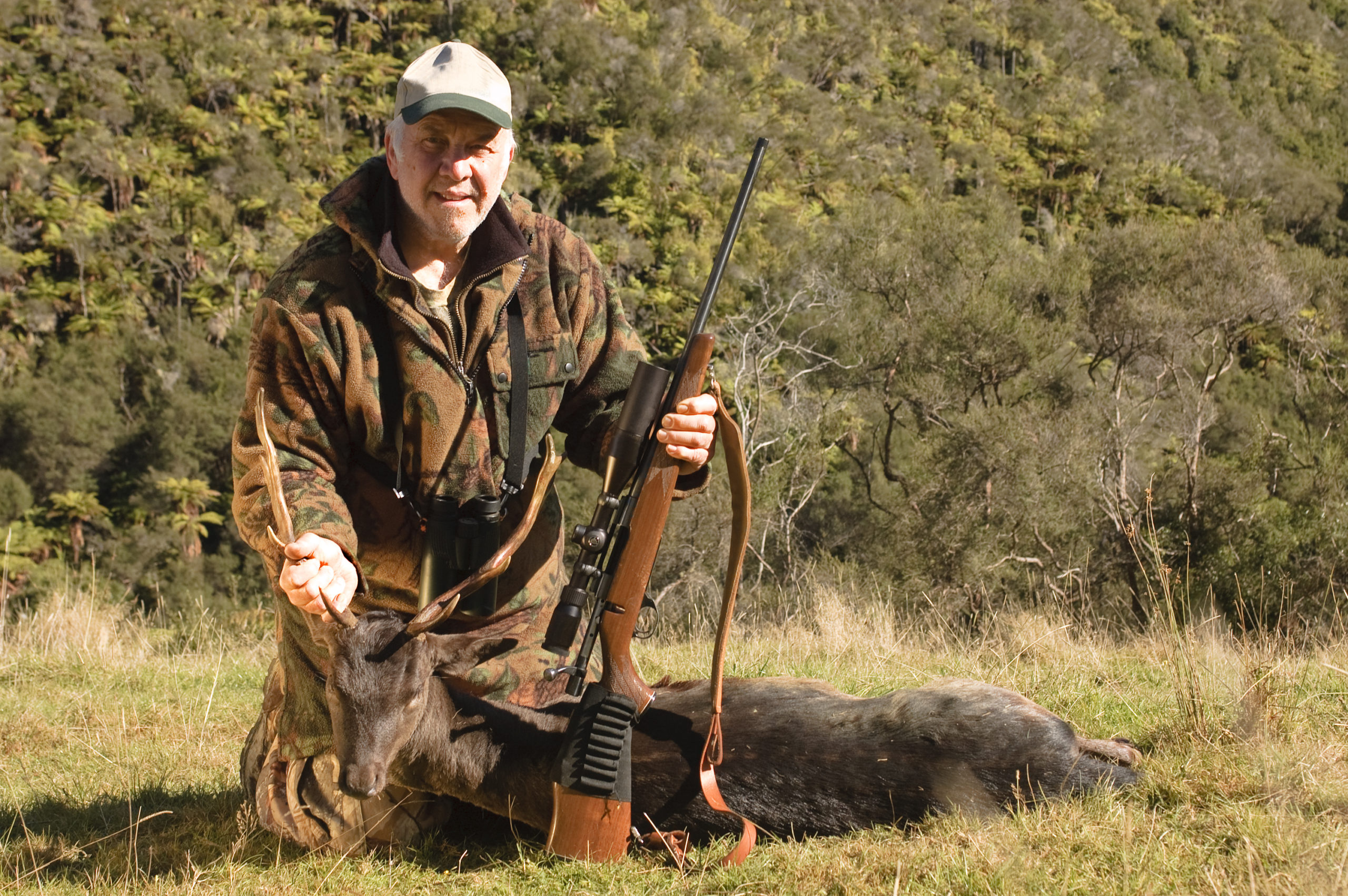
Rifled refers to a firearm’s barrel containing a series of spiral grooves along its internal bore. A rifled bore is typically found on rifles and handguns and is used to greatly improve accuracy.
Some shotguns, designed for firing slugs, might also feature a rifled bore.
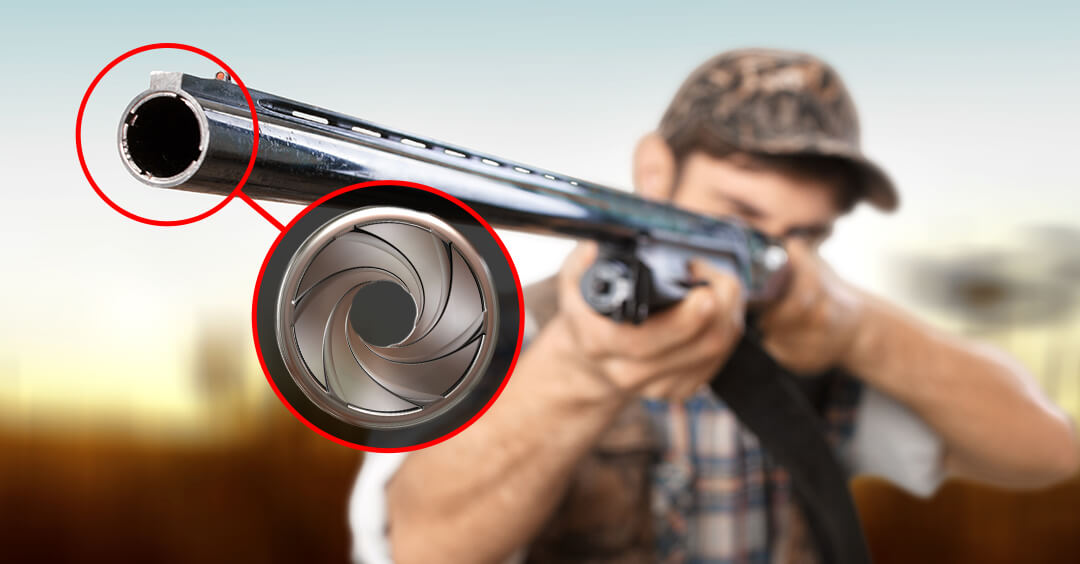
A shell is a cartridge designed for use with a shotgun only.
Shells might contain either shot (spherical balls made of lead, steel, or some other metal) or slugs (large projectiles, like an over-exaggerated bullet). The latter is typically used with a rifled bore shotgun, though in many cases might be used with a smooth bore shotgun as well.
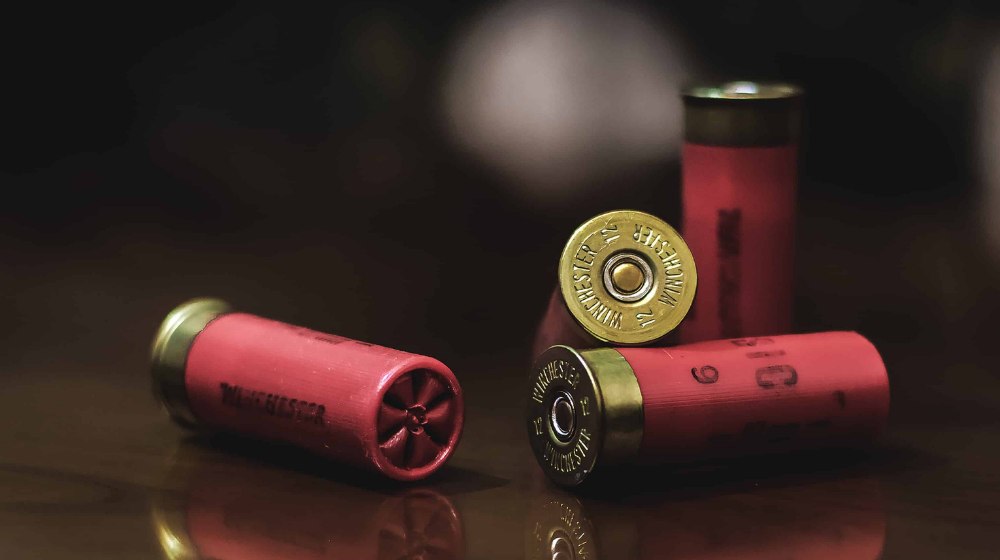
Shotguns are long-barrel firearms designed to be fired from the shoulder, but discharge shells (with either shot or slugs) rather than standard cartridge projectiles (bullets).
Many shotguns use a pump action (as do some rifles), whereby a spent shell or cartridge is manually ejected by sliding the fore-end towards the user. Once the fore-end is returned to its forward position, a fresh shell or cartridge is chambered.
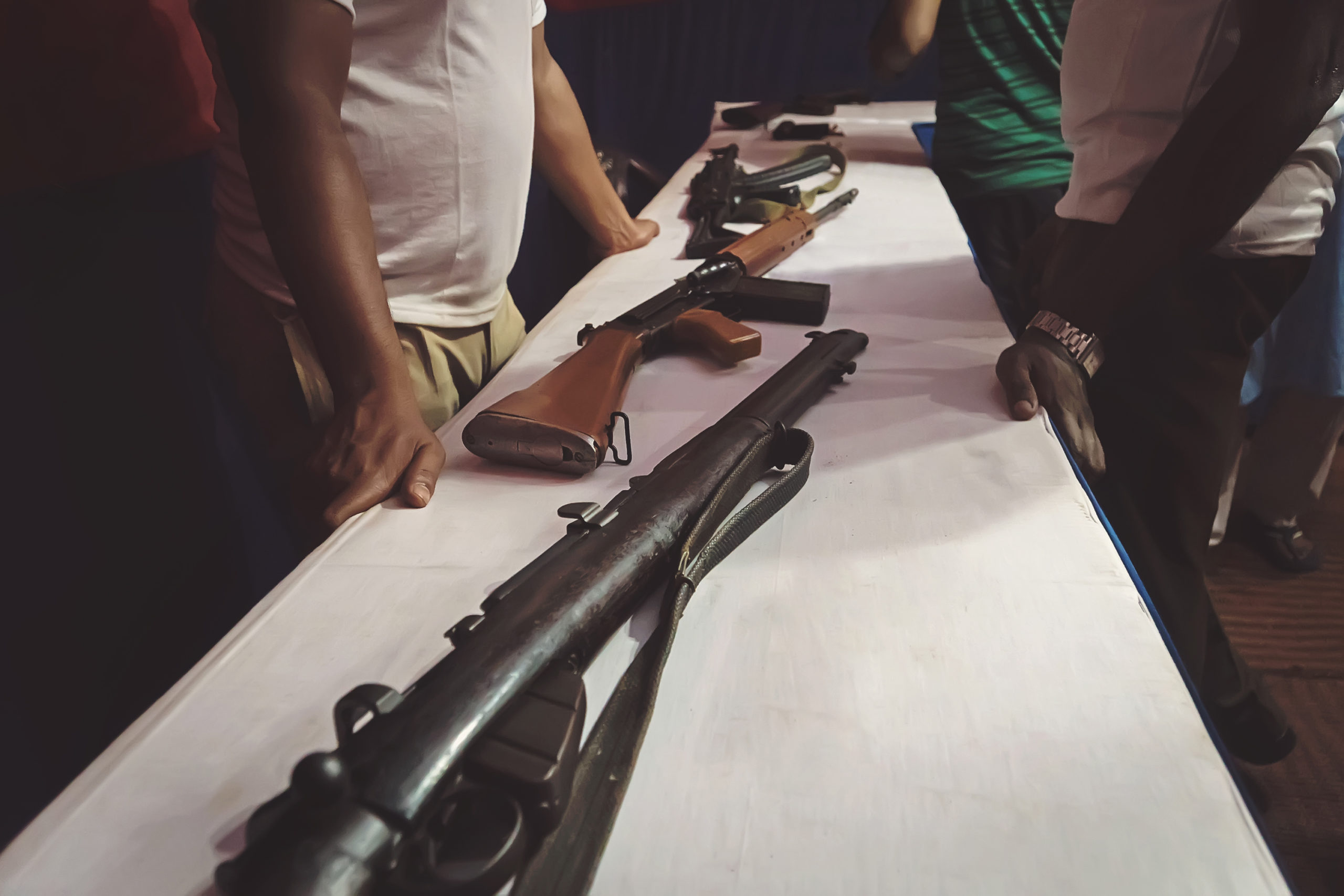
Often mistakenly referred to as a “silencer,” a sound suppressor is an attachment users can connect to the muzzle of certain firearms. The sound suppressor reduces (but does not eliminate) the amount of noise made when the firearm is discharged.
While misrepresented in cinema as a means of enabling stealth, a sound suppressor is merely a safety feature that helps prevent injury to the user or other nearby individuals who are not wearing hearing protection.
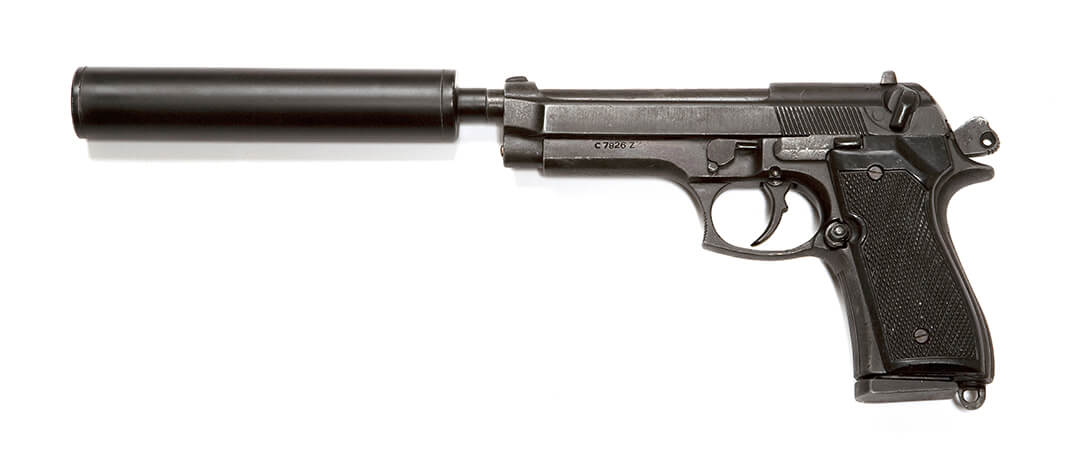
As opposed to a rifled bore, the smooth bore does not feature any spiraling grooves along the barrel’s interior.
Many shotguns still feature a smooth bore (exceptions are typically designed to fire slugs rather than shot), as do older musket rifles.
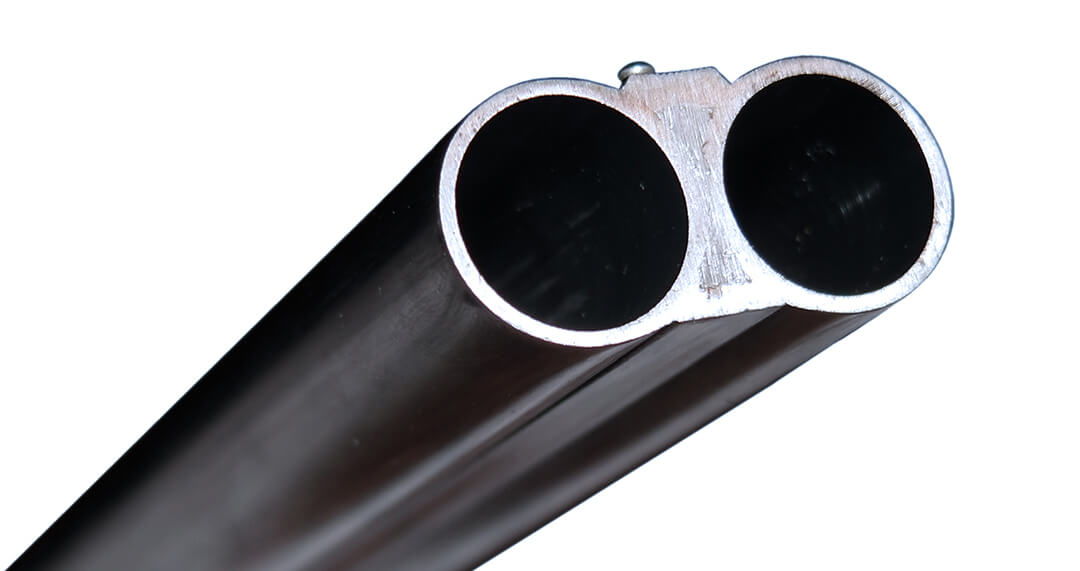
The stock is the rifle or shotgun part that is braced against the user’s shoulder for firing. This allows for better aiming and recoil management.
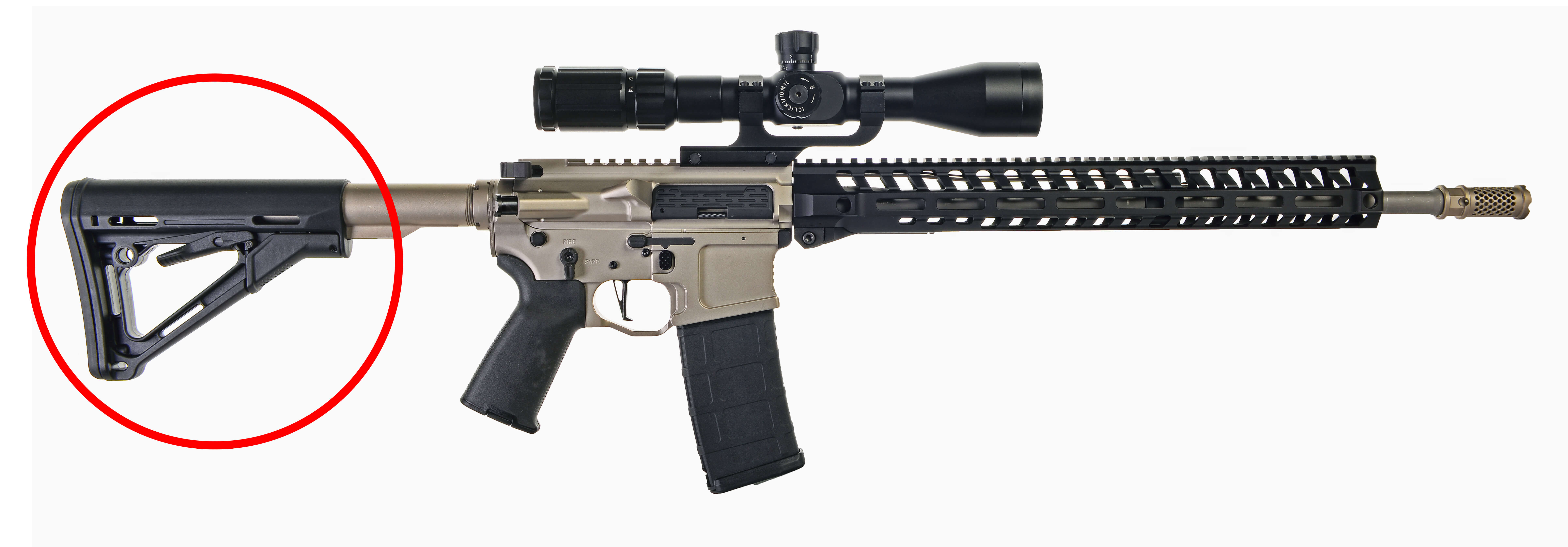
Wadcutters are a special type of cartridge projectile (bullet) typically used in target practice and competitions.
A wadcutter features a flattened front surface, which allows for easier scoring by producing a smooth, round hole when fired at a paper target.
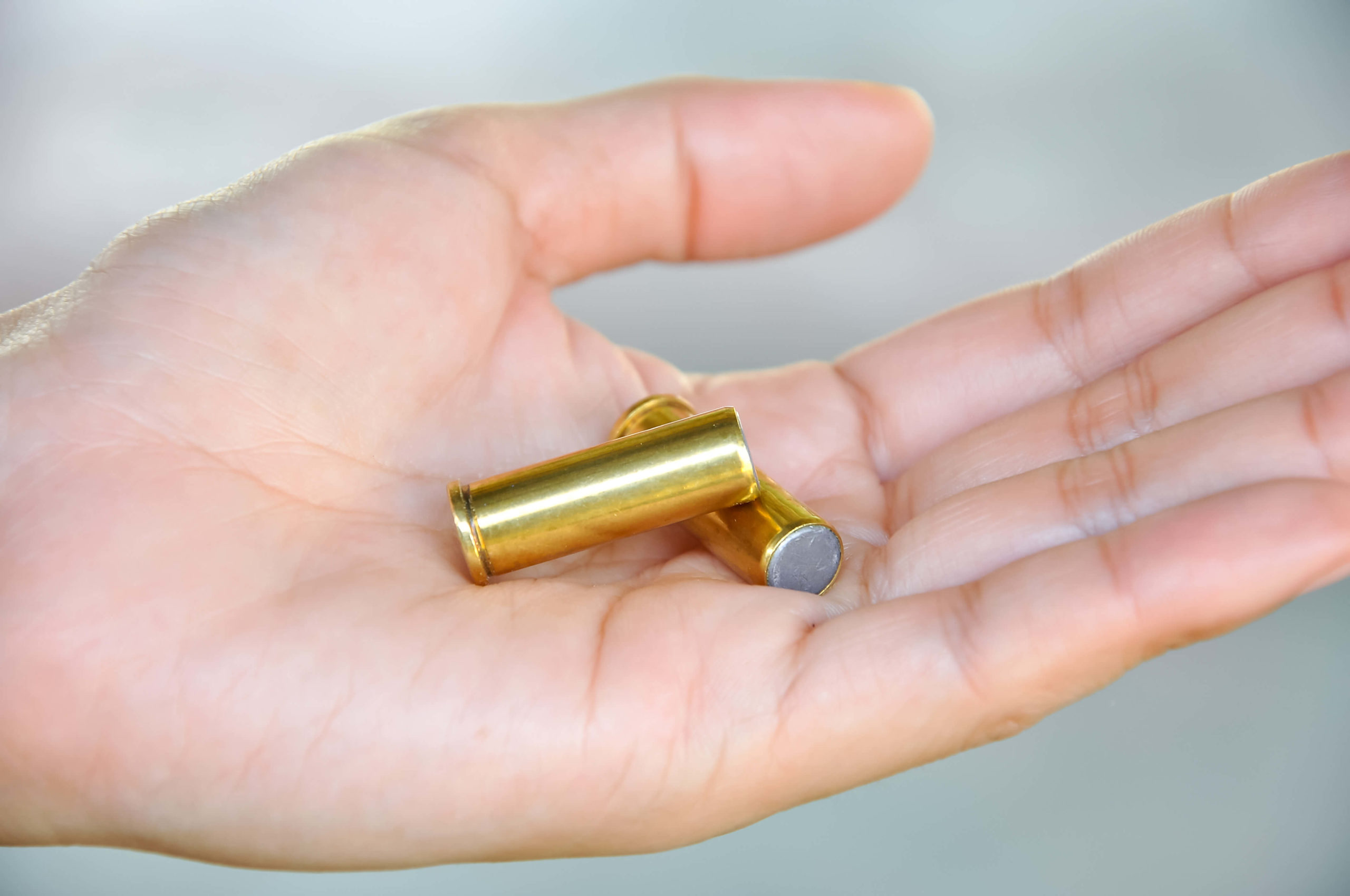
Windage refers to the horizontal alignment of a gun’s sights to ensure that when using the sights, the user is able to properly aim the firearm. Without correct windage, the aim might be too far to the left or the right of the intended target point.
Commonly used together with the elevation (see above).
Are there any other gun-related terms you struggle to understand or remember the definition of? Let us know!
